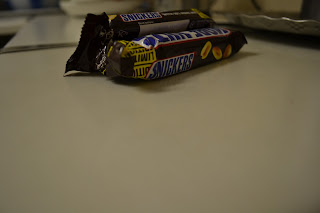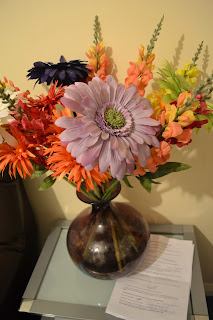Tuesday, 14 May 2013
My Final Piece
First, I took a picture to use as my background. I made sure it had lots of space for me to add my other images (love/hate). I wanted to make something like 'Find Waley' kind of thing. I think this picture will be viewed mostly by children as it's like a game to find as many objects as you can. I put the pictures of things I love and hate in a particular place where they fitted the most. The things I love are coloured and hate are black and white so the viewers can tell which ones what as thats the theme of this work. The ones I love is coloured which creates a happy mood as its coulourful; it adds life to it. I decided to make the ones I hate black and white because it creates a dull and boring atmosphere. The lines seen in the picture are mostly straight lines both horizontal and vertical. This helped me decided where to put my small images. There is a pattern created by the repetition of the buildings. The overall photograph was taken outside in the morning. You can see few light sources as there are some shadows visible. I didn't use any artificial light so it must be natural light, the sun.
Tuesday, 19 February 2013
Experiment towards my final piece
This is an experiment for my final piece.
I decided to change some of their properties. This is how it turned out.
These are some of the tools that helped me change their properties-
Final Piece Images
These are the pictures I plan to use for my final piece.
Things I love:
Things I hate (I want these pictures to be black and white):
Saturday, 16 February 2013
Compositional Visual Research
Saturday, 9 February 2013
Analysing Harold Edgerton's work


These are some of the pictures I like of Harold Edgerton.

This image really stood out to me because I like it how you are able to see the bullet go through the card in a slow motion. It's very detailed. The two sides so J can represent love and hate. Also, the background shows a gradual change from the dark blur colour to light. This also supports the idea of love and hate. I like the fact that the background has plain colours so the card is the subject that's focused in the picture. Furthermore, the card is placed on the darker side which emphasis it's importance. Overall, this image creates a straight lines as the sides of the cards as straight and the suit of the card is diamonds which is created by lines too. The bullet goes straight through the card which connects the two important subject together although they are seperate . The bullet is shown to be reddish/maroon which symbolises blood so, it personifies the card as a living being as it's bleeding to death; it makes it seem the card was alive. This is further supported by the colour of the card (red) which again shows a sign of blood and death. This image uses the rule of thirds and the space between the card and the bullet.
I think that this image creates a sense of danger also a warning.
Harold Edgerton Biography
Harold Edgerton
Dr Harold Edgerton was born n Freemont, Nebraska on April 6, 1903.
He was raised in Aurora, Nebraska.
He was an electrical engineer at Massachusetts Institute of Technology.
He was interested in capturing moments that the eye cannot see.
Edgerton's work was featured in an October 1987 National Geographic Magazine article entitled, "Doc Edgerton: the man who made time stand still."
On January 4, 1990, he died.
My Response to Alvin Langdon Coburn
This is my response to Alvin Langdon Coburn's work, Vortograph. I used photoshop to create movement to these images. I took pictures of the things I love from different distance but same angle.
Converse
Cards
Using photoshop
I also experimented with different styles for each layer to create different effects.
I used quick selection tool to cut out the background and used paint bucket tool to make my background black.
Saturday, 2 February 2013
Subscribe to:
Comments (Atom)














































